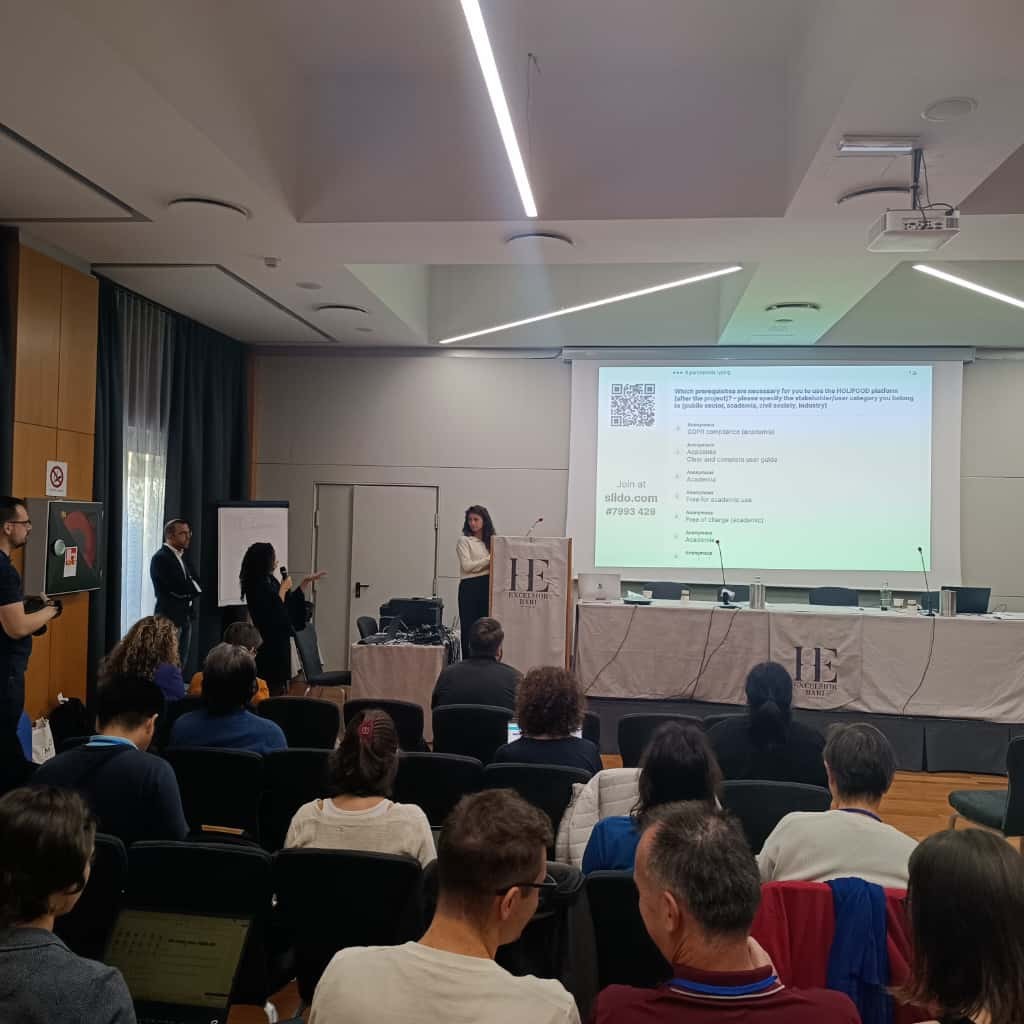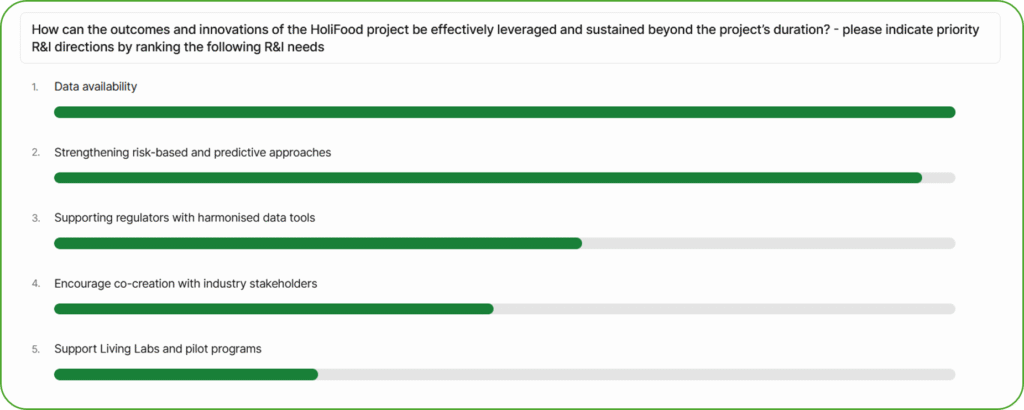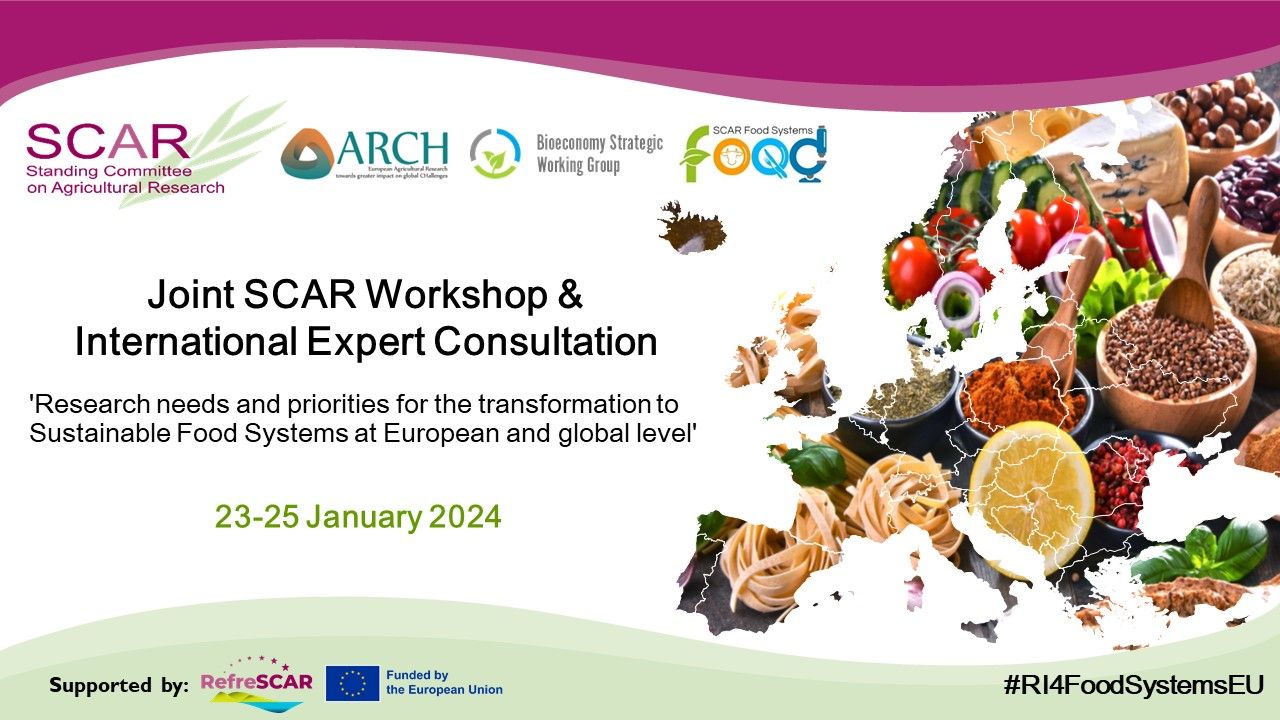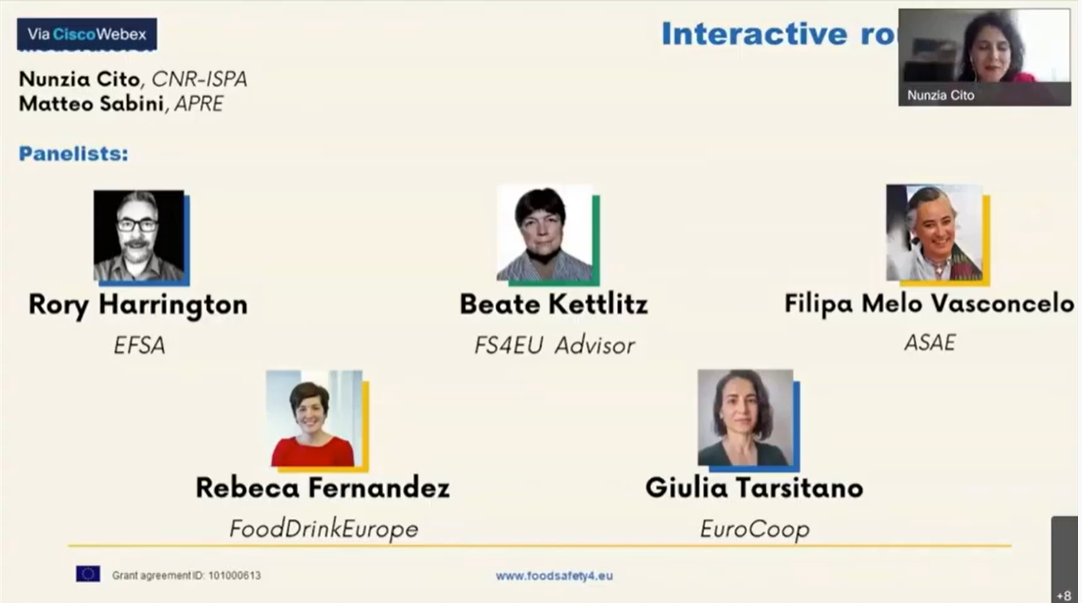HOLIFOOD: Insights from the 2nd Cross-Fertilization Workshop

Veronica Lattanzio, Nathan Meijer, Ine van der Fels-Klerx, Sara Altamore, Alessia Careccia
On October 9, 2025, the HOLiFOOD project convened its 2nd Living Labs (LL) Cross-Fertilization workshop, both in person in Bari, Italy, and online, bringing together a diverse group of stakeholders from academia, public sector, industry, and EU agencies. This follow-up event built on the momentum of the first workshop, to catch stakeholders’ needs in AI-driven emerging risk prediction and holistic risk assessment solutions.
The Cross-Fertilization workshop represents a pivotal moment in the HOLiFOOD Living Labs process, following the initial exploration and experimentation phases, where the three Living Labs converge to exchange insights, evaluate interim results, and collaboratively steer the project towards its final evaluation and the drafting of a comprehensive white paper outlining future food safety innovation directions.

Managers from the three Living Labs presented their goals and how the LL methodology is serving for collaborative pilot testing and iterative refinement to match end-users needs. External experts joined the participatory workshop, setting the stage for a dynamic exchange of perspectives. The workshop participants were invited to reflect on crucial questions around the HOLiFOOD Early Warning and Emerging Risk Prediction Systems usability and future impact.
Key poll insights revealed stakeholder expectations and concerns:
Prerequisites for platform use: respondents prioritized free, open-source access with intuitive interfaces, supported by clear user guides and compliance with GDPR. The need for well-structured, transparent data and validated tools, recognized officially by European and national food safety authorities, was highlighted.
Barriers to adoption: potential pitfalls included fears over platform complexity, costs, transparency, and the risk of obsolescence given rapid AI developments. The importance of embedding the platform within official regulatory frameworks was underscored to ensure credibility and sustained use.
Competitive landscape and HOLiFOOD’s unique value: stakeholders acknowledged existing platforms such as those developed by FoodSafety4EU, FoodSafeR and private early-warning systems (e.g. SGS or FOODAKAI), but pointed to HOLiFOOD’s distinctive holistic approach across five dimensions and data interoperability as key advantages. Suggestions were made for potential synergies or integration with established platforms.


The critical question of how to leverage HOLiFOOD’s results beyond the project lifespan prompted participants to rank prospective R&I priorities. The top areas identified were:
1. Enhancing data availability through robust collection, exchange, and interoperable platforms for regulatory, scientific, and industrial stakeholders.
2. Strengthening risk-based and predictive approaches, particularly AI-driven models integrating multi-dimensional data.
3. Supporting regulators with harmonized data tools to aid the continual updating of food safety and fraud regulations.
Less prioritized but still recognized were the encouragement of co-creation with industry stakeholders and the support for Living Labs and pilots to accelerate real-world innovation adoption.

Starting from the pools results, participants reflected on the essential next steps to maximize the impact and usability of the HOLiFOOD platform.
It was widely recognized that tailored training programs for different stakeholders will be crucial to empower users across sectors to effectively leverage these innovations. Moreover, the development of methodologies for searching and identifying relevant information to convert into actionable data was highlighted as both a prerequisite and part of the broader challenge of data availability.
The discussion also underscored the nuanced data sharing dynamics within the food industry. While many companies, especially larger ones, maintain proprietary control over their data to demonstrate food safety management to clients or to promote their risk management products, the incentive to share this data publicly via the HOLiFOOD platform remains unclear. Special attention was given to the realities faced by SMEs, which often lack the resources and capacity to directly engage with complex platforms or commit extensive data.
Participants emphasized the need for added value to motivate such sharing, suggesting a solution whereby data contributors could receive comparative insights, such as benchmarking against industry averages or percentiles, without compromising confidentiality.
Towards the 3rd cross-fertilization workshop
Gaining support and active participation from both SMEs and larger companies, as well as governmental data providers, was seen as vital to establishing a robust foundational ecosystem for the platform. Initiatives to better understand the added value that companies and public/private control labs might seek in enriching the platform’s data pool were envisaged by the workshop participants and will be embedded in the LL pathway towards the final evaluation phase and the 3rd cross-fertilization workshop.
Do you want to get involved in the HoliFood LL process?
Learn more here: https://HOLiFOODproject.eu/citizen-and-societal/living-labs/
Stay tuned!
Latest Articles

HOLIFOOD: Towards AI-driven emerging Risk Assessment: a multi-stakeholder perspective

HOLIFOOD: insights from 1st cross-fertilization workshop

HOLIFOOD: Insights from the 2nd Cross-Fertilization Workshop

Protecting public health: understanding the importance of cumulative risk assessment of pesticides
The EU Food Safety Platform: a journey from Bari to Brussels and beyond

SCAR consultation workshop on Sustainable Food Systems: highlights from EU FOOD SAFETY PLATFORM



